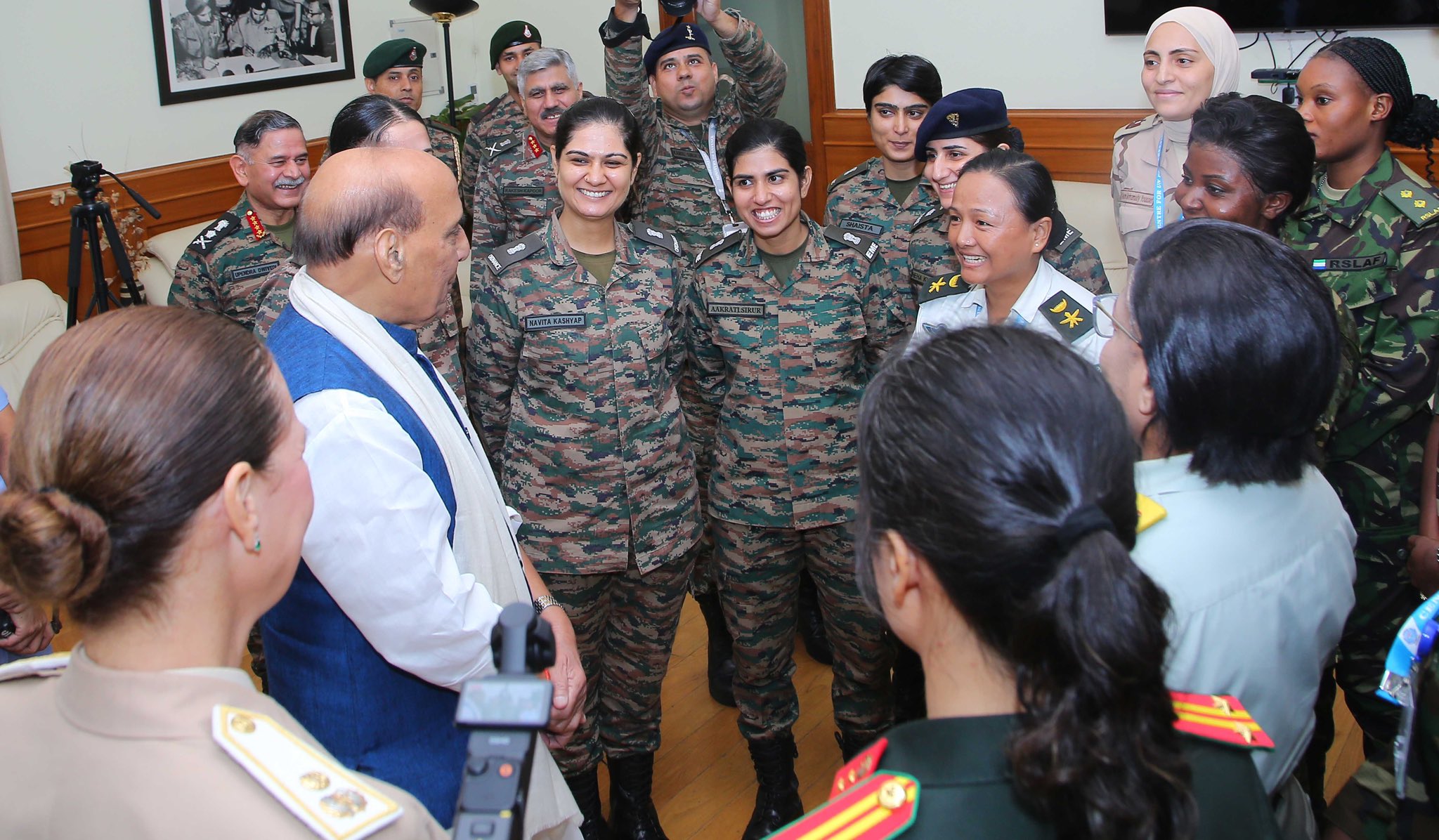India Reframes Global Power Through Defence Reform, Gender Equity and Strategic Leadership: Defence Minister Rajnath Singh
India's Defence Minister Rajnath Singh reaffirmed New Delhi’s vision for a harmonious global order rooted in care, equity, and collective progress during an address at the World Leaders Forum in New Delhi on August 22, 2025.
Citing India’s civilisational ethos, Singh said the country’s rise is guided not by the ambition to dominate, but by the commitment to the global good. “In our tradition, the measure of strength is not in the ability to command, but in the capacity to care,” he said.
 |
| Image Source: Defence Minister |
Responding to a recent remark by Pakistan’s Army Chief, who likened India’s economy to a sports car and Pakistan’s to a dump truck, Singh said the comparison was “not a joke, but a confession.”
He added, “If two nations gained independence at the same time, and one flourished while the other fell behind, it reflects vision and policy on one side and failure on the other.”
Singh noted that India’s defence transformation is central to its national resurgence. Domestic defence production has more than tripled over the last decade, reaching ₹1.5 lakh crore ($18 billion) in 2024–25, with a target of ₹2 lakh crore this year.
Simultaneously, defence exports have surged nearly 35-fold--from ₹686 crore in 2013–14 to over ₹23,600 crore in 2024–25--reaching nearly 100 countries.
India aims to touch ₹30,000 crore in defence exports this year and ₹50,000 crore by 2029.
He highlighted that India has now reserved 75% of its defence capital procurement budget for Indian firms. Five positive indigenisation lists covering over 500 platforms and weapons systems have been issued, alongside over 5,000 critical components identified by Defence PSUs for domestic production.
“Aatmanirbharta in defence is not just about reducing imports. It is about building a globally competitive ecosystem, capable of supplying world-class products,” he said.
Hindustan Aeronautics Limited has received orders for 97 Tejas fighter jets worth ₹66,000 crore, in addition to an earlier order of 83 jets. India is also advancing toward indigenous production of fifth-generation fighter aircraft and engines.
Singh noted that Airbus’s partnership with Tata Aerospace to manufacture C295 transport aircraft in India illustrates the potential of global partnerships under the ‘Make in India’ framework. “Make in India is Make for the World,” he said, inviting international defence firms to co-invest and co-produce.
The Defence Minister underscored the rapid development of defence corridors in Uttar Pradesh and Tamil Nadu, the success of the iDEX initiative for startups, and the policy shift allowing up to 74% FDI in defence under the automatic route.
India’s defence budget has grown from ₹2.53 lakh crore in 2013–14 to ₹6.22 lakh crore this year, with further increases expected following the success of Operation Sindoor, which Singh described as a turning point in India’s defence posture.
Speaking at The Economic Times World Leaders’ Forum 2025 in New Delhi. https://t.co/dI6LJZ6ACw
— Rajnath Singh (@rajnathsingh) August 22, 2025
He concluded his address by asserting that India is uniquely placed to shape the next phase of global governance, citing three pillars: its moral philosophy rooted in Vasudhaiva Kutumbakam (the world is one family), its economic rise as the world’s fastest-growing major economy, and its demographic advantage.
With 65% of its population under 35 and over 100 unicorn startups, Singh said India is leveraging its youth to drive technological and strategic innovation.
Separately, Singh also interacted with women officers from 15 countries participating in the United Nations Women Military Officers Course (UNWMOC-2025), being held in New Delhi under the joint aegis of the Ministry of Defence and Ministry of External Affairs. The nearly two-week programme is designed to prepare women military leaders for multidimensional UN peacekeeping operations.
Addressing the group at South Block, Singh reaffirmed India’s long-standing commitment to UN peacekeeping and gender equality.
“We are strengthening policies to encourage women’s participation in our Armed Forces and peacekeeping missions. Our goal is inclusive leadership, equal opportunity, and sustained peace,” he said.
Participants in UNWMOC-2025 include women officers from Armenia, DR Congo, Egypt, Ivory Coast, Kenya, Kyrgyz Republic, Liberia, Malaysia, Morocco, Nepal, Sierra Leone, Sri Lanka, Tanzania, Uruguay, Vietnam, and India.
The course covers key peacekeeping challenges including International Humanitarian Law, the protection of civilians, conflict-related sexual violence, and child protection.
Singh released a commemorative publication, Blue Helmet Odyssey: 75 Years of Indian Peacekeeping, marking the Platinum Jubilee of India’s participation in UN missions. He described peacekeepers as “like the sky—offering protection and security—and like the oceans—building bridges across borders.”
India remains the largest troop contributor to UN peacekeeping and has played a pivotal role in advocating for greater inclusion of women in missions. Singh noted that women officers often build stronger trust with local communities, serve as role models, and play a vital role in preventing violence and improving access to humanitarian assistance.
With the presence of senior military leadership and international guests, the event showcased India’s evolving strategic vision—one that places defence, diplomacy, and diversity at the core of global peace and security.
